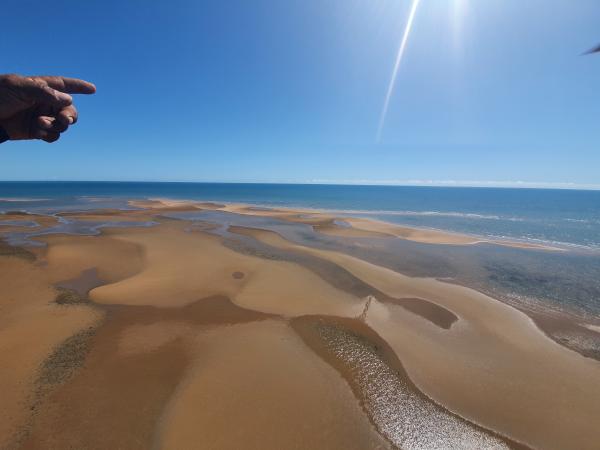Sacred sites are places within the landscape that have a deep significance under Aboriginal tradition.
Hills, rocks, waterholes, trees, plains, lakes, billabongs and other natural features can be sacred sites. In coastal and sea areas, sacred sites may include features which lie both above and below the water.
Sacred sites are important to the cultural fabric and heritage of the Northern Territory. They are an intrinsic part of a continuing body of practices and beliefs emanating from Aboriginal laws and traditions. Sacred sites give meaning to the natural landscape. They anchor cultural values and spiritual and kin-based relationships in the land.
Sacred sites often derive their status from their association with ancestral beings, whose travels across the land and sea created our physical and social world. The stories, songs and dances of the sites have been passed down through many, many generations and can link different groups of Aboriginal people across the NT and Australia.
Sacred sites can be obvious landscape features such as a mountain range, but they can also be inconspicuous, such as a small soak.
Some sacred sites may be places where only certain people can enter. Sites, and the rituals associated with them, may also be restricted to women, or to men, in accordance with Aboriginal tradition. Revealing the existence of such sites to members of the opposite gender is considered dangerous and potentially life threatening.
Sacred sites are the responsibility of Aboriginal custodians who protect their sites and whose rights and roles are codified through kinship and relationships to land. They are responsible for managing the site, keeping it safe and making sure it is used according to tradition.
Aboriginal people know that sacred sites can be dangerous and powerful places, and sites can play an important part in their health and well-being. Activities such as cutting down a sacred tree or digging into sacred ground may have serious consequences both for the person causing the disturbance, and for the Aboriginal people who are custodians for that place. According to Aboriginal law if custodians of sacred sites allow a site to be damaged, other Aboriginal people will hold them responsible. This can lead to sanctions within Aboriginal society and the community.
Aboriginal sacred sites are recognised and protected as an integral part of the Northern Territory’s and Australia’s cultural heritage under the Aboriginal Land Rights (Northern Territory) Act 1976 (Land Rights Act) and the Northern Territory Aboriginal Sacred Sites Act 1989 (Sacred Sites Act).
It is the responsibility of all Territorians and visitors to the NT to respect and preserve the sacred sites according to the wishes of Aboriginal custodians.

